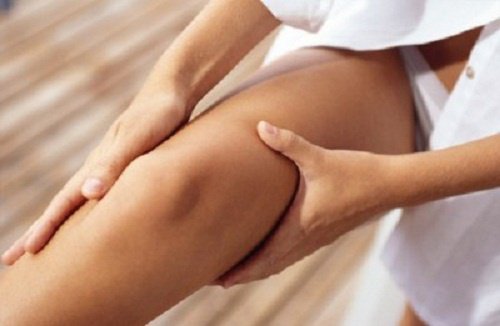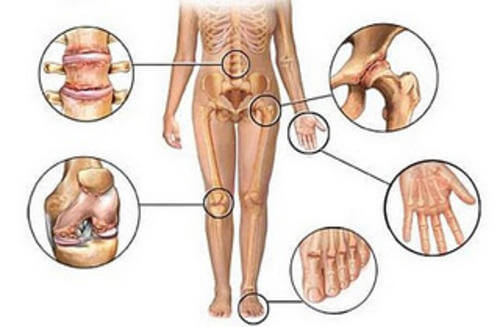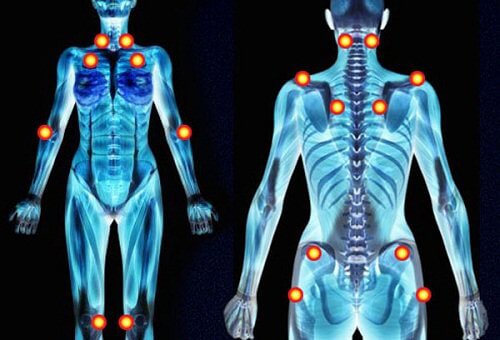Pain in the Arms and Legs: What's Causing It?


Written and verified by psychologist Valeria Sabater
Has this ever happened to you? You come home some days with horrible pain in the arms and legs, or a severe heavy feeling that keeps you from moving and forces you to sit down, even when you don’t feel like you need to rest.
It’s important to know that this is a common ailment that’s typically a result of a muscle strain or simple fatigue at the end of the day. Perhaps more important, however, is the fact that if this painful nuisance continues for weeks or months, you should begin to worry.
Let’s talk a little bit more about pain in the arms and legs.
Causes of pain in the arms and legs
Pain in the limbs is a very common ailment. It doesn’t matter how old you are. Furthermore, children and teenagers from ages eight to 17 can suffer from it. It happens when they grow and go through physical changes that cause the structure of their limbs to mature.
But what about adults? What’s causing this pain in the arms and legs? Let’s find out.
1. Colds and the flu

You might be wondering why it affects the extremities in particular, causing such acute muscle pain. This is because a viral infection is attacking your body, which reacts to try to defend itself.
Large numbers of lymphocytes are released into the bloodstream to fight off the enemy. But this defensive response causes your body temperature to rise and the release of inflammatory molecules known as prostaglandins. All of that causes the classic pain in your legs and arms, as well as general malaise and usually a fever.
Therefore, it’s very common that your first symptoms of a cold or the flu are soreness and pain in the arms and legs.
Also read:
What to Do When You’re Sick at Home with the Flu
2. Joint pain

This causes feelings of heaviness, tiredness, or a burning sensation in the thighs or shoulder region. The pain may not be exclusively focused on the joint itself – it frequently radiates to the surrounding muscle tissue or the entire limb.
Also read:
Incredible Natural Remedies for Joint Pain
3. Problems with your circulation

- Numbness in the arms and legs, accompanied by cramps in the hands or feet.
- The appearance of ulcers on the legs.
- Loss of strength in the hands – you may notice that you drop things more frequently.
- Headaches.
- Bluish tint on the nails
- Dizziness upon standing up.
- A feeling of heaviness in the legs, or swollen hands and fingers.
- The appearance of varicose veins.
Be attentive to any of the above symptoms that typically accompany problems with circulation. This is very important, especially if you’re experiencing an irregular heartbeat or are short of breath. In these instances, you should see a doctor immediately, because they could be signs of a heart problem. Don’t delay!
4. Fibromyalgia

Still, it’s important to be aware of these other associated symptoms:
- Your pain is accompanied with extreme fatigue.
- There are particularly painful points on your body, such as your hips, the neck, your collarbone, the elbow joints, the knee area, or the buttocks.
- You may also experience a lot of trouble sleeping. Also, the most painful time of the day is in the morning when you get up.
- You experience migraines, minor memory losses, or difficulty concentrating.
Finally, we should remind you that generally, pain in the arms and legs is usually due to simple fatigue and appears later in the day. But as we indicated in the beginning, if you notice that your pain is lasting for weeks or months and is interfering with your ability to lead a normal life, it’s time to see your doctor.
Never forget how important it is to lead a healthy lifestyle, have a proper diet, and get regular exercise. This helps you manage stress and avoid the excessive strain that tends to be focused on your musculoskeletal system.
All cited sources were thoroughly reviewed by our team to ensure their quality, reliability, currency, and validity. The bibliography of this article was considered reliable and of academic or scientific accuracy.
- Enseki, K., Harris-Hayes, M., White, D. M., Cibulka, M. T., Woehrle, J., Fagerson, T. L., … Torburn, L. (2014). Nonarthritic Hip Joint Pain. Journal of Orthopaedic & Sports Physical Therapy. https://doi.org/10.2519/jospt.2014.0302
- Kidd, B. L. (2006). Osteoarthritis and joint pain. Pain. https://doi.org/10.1016/j.pain.2006.04.009
- Khan, Q. (2009). Fibromyalgia and chronic fatigue syndrome. Journal of Pain and Palliative Care Pharmacotherapy. https://doi.org/10.1080/15360280902728336
- González Iturri, J. J. (1998). Lesiones musculares y deporte. Revista Brasileira de Medicina do Esporte, 4(2), 39-44. http://www.scielo.br/scielo.php?script=sci_arttext&pid=S1517-86921998000200002
- de Andrés, A. J., Acuña, B. J. P., & Olivares, S. A. (2014). Dolor en el paciente de la tercera edad. Revista Médica Clínica Las Condes, 25(4), 674-686. https://www.sciencedirect.com/science/article/pii/S0716864014700896
- Mehler, R. E. (2014). How the circulatory system works. John Wiley & Sons.
- López Espino, M., & Mingote Adán, J. C. (2008). Fibromialgia. Clínica y Salud, 19(3), 343-358. http://scielo.isciii.es/scielo.php?script=sci_arttext&pid=S1130-52742008000300005
- González, A. M. (2014). Dolor crónico y psicología: actualización. Revista Médica Clínica Las Condes, 25(4), 610-617. https://www.sciencedirect.com/science/article/pii/S0716864014700811
This text is provided for informational purposes only and does not replace consultation with a professional. If in doubt, consult your specialist.








